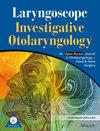Enhancing Mucus Flow and Clearance by Grafting Zwitterionic Hydrogel Films to Luminal Surfaces
Abstract
Objective
To determine the effects of zwitterionic hydrogel films on mucus contact angles, flow, and stasis with respect to medical polymer surfaces, both flat and tubular.
Methods
A zwitterionic hydrogel thin film was photografted onto medical rubber surfaces and compared against non-zwitterionic hydrogel thin films and untreated surfaces to determine its impact on mucus contact angles, mucus flow on sheets and tubes, and mucus plugging.
Results
Zwitterionic and conventional hydrogel films significantly reduce the mucus contact angles and the tilt required to initiate mucus flow on sheets and in tubular systems. Preliminary experiments show that these films may also shorten the time required for a mucus-plugged tube to unplug when exposed to saline.
Conclusion
Zwitterionic and conventional hydrogel films on typical medical surfaces reduce resistance to mucus flow, increase mucus discharge, and may facilitate faster unplugging of dried mucus. These effects are the most pronounced on tubes of larger inner diameter (greater than 2.6 mm) and tend to dissipate for tubes of smaller diameter. These results may help guide future improvements to medical tubes intended to discharge mucus and ventilate, resulting in fewer complications for patients.
Level of Evidence
Level 2, randomized individual trial.


 求助内容:
求助内容: 应助结果提醒方式:
应助结果提醒方式:


